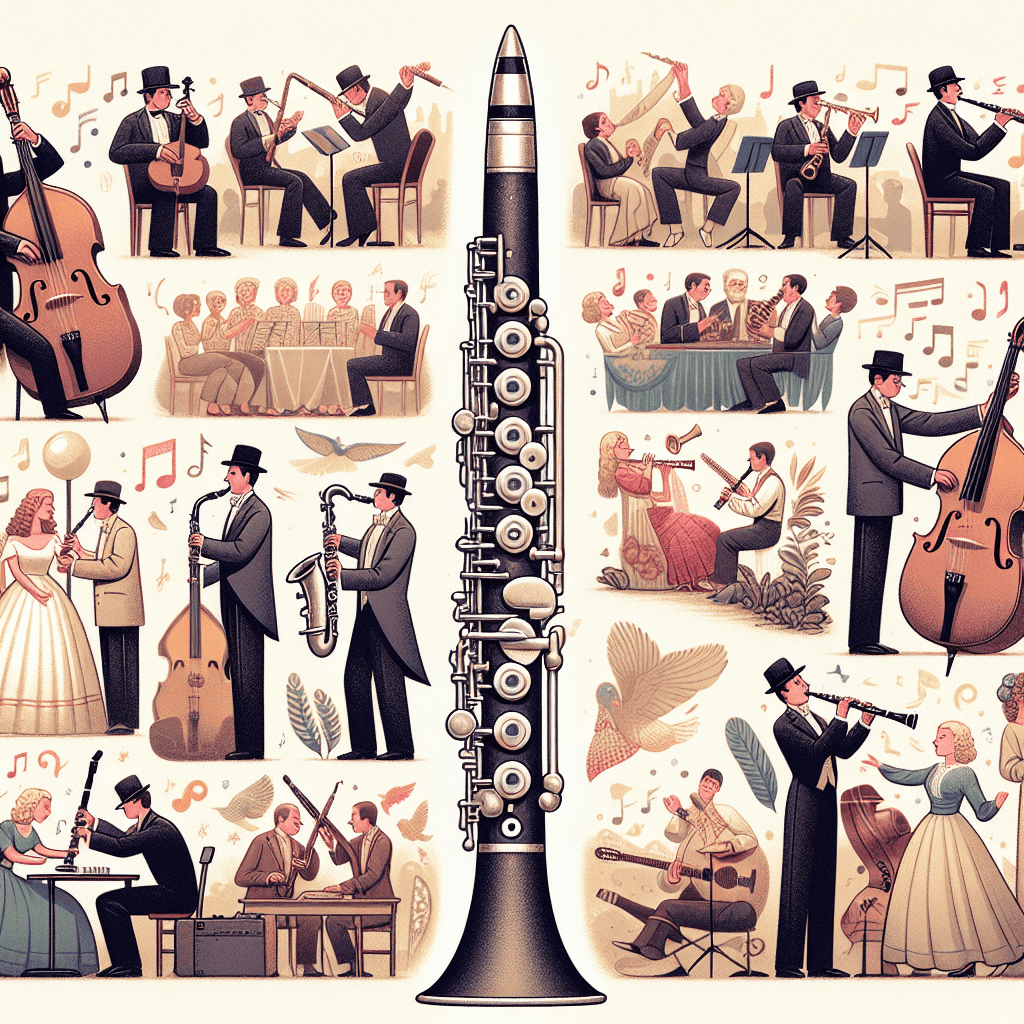The clarinet is a woodwind instrument that has charmed audiences for centuries with its rich, warm sound and expressive capabilities. But did you know that the clarinet belongs to a family of instruments? In this post, we'll explore the world of clarinet family instruments, highlighting their unique characteristics and roles in music.
Understanding the Clarinet Family
The clarinet family includes several types of clarinets, each producing distinct sounds and tones, suitable for various musical genres. The B? clarinet is the primary member of this family, but there are many others, each with its own specific qualities. Let's take a closer look at each one!
| Clarinet Type | Key Features | Common Uses |
|---|---|---|
| B? Clarinet | Warm, mellow tone; versatile | Orchestras, bands, solo performances |
| A Clarinet | Darker, richer sound | Orchestral settings, classical music |
| E? Clarinet | Bright, penetrating sound | Military bands, orchestral works |
| Bass Clarinet | Deep, sonorous sound | Orchestras, providing harmonic foundation |
| Contrabass Clarinet | Profound, resonant voice | Large orchestras, contemporary ensembles |
| A? Clarinet | Bright, focused tone | Wind bands, orchestras |
1. B? Clarinet
The B? clarinet is the most common clarinet in orchestras, bands, and solo performances. Its warm and mellow tone makes it versatile across various musical styles, from classical to jazz. With a range of about three octaves, this instrument allows for expressive playing, and its popularity among clarinetists has influenced many manufacturers, including Martin Freres, known for making high-quality instruments.
2. A Clarinet
The A clarinet is similar to the B? clarinet but slightly longer, giving it a darker and richer sound. It's mainly used in orchestral settings and preferred for playing classical music. The A clarinet's tuning works well for pieces originally composed for it, adding a unique character that fits well with orchestral color.
3. E? Clarinet
Smaller than its B? and A counterparts, the E? clarinet is often used in military bands or orchestral works that need a higher pitch. Its bright, penetrating sound stands out, making it great for melodies that need to be heard over a thick orchestral sound. Some well-known pieces feature solos for E? clarinet, showing off its unique voice.
4. Bass Clarinet
The bass clarinet is much larger than regular clarinets and is known for its deep and rich sound. It extends the range of the clarinet family downward and plays an important role in orchestras, often doubling bass parts or providing a rich harmonic foundation. With a range that can reach down to a low B?, the bass clarinet offers a wide range of tonal possibilities.
5. Contrabass Clarinet
The contrabass clarinet takes the richness of the bass clarinet even lower. This instrument is used mainly in larger orchestral settings or contemporary music ensembles. It has a deep and resonant voice, capable of producing tones that you can feel as much as hear. The contrabass clarinet acts as a bridge between woodwinds and the lower brass sections.
6. Clarinet in A?
While not as common as the B? and A clarinets, the A? clarinet has its place, especially in wind bands and orchestras. It offers a bright and focused tone, making it a unique addition to various compositions written for this instrument.
The Role of Martin Freres in the Clarinet Family
Martin Freres has been a well-known name in the clarinet world for decades, making instruments for musicians of all levels. Their focus on quality is evident in each clarinet they produce, allowing musicians to experience the best that the clarinet family has to offer.
The careful choice of materials, precise manufacturing, and attention to detail in their production ensure that each instrument meets the needs of professional musicians. From beginner models to professional-level instruments, Martin Freres continues to inspire players to explore their musical potential.
Choosing the Right Clarinet for You
Understanding the differences among the various clarinet family instruments is key when picking the right clarinet for your needs:
- Sound: Think about what sound you're looking for. Do you like a bright sound, like that of the E? clarinet, or the warm tones of the B? clarinet?
- Music Style: Consider what style of music you want to play. Classical orchestras often use the A clarinet, while jazz bands might prefer the B? clarinet.
- Skill Level: If you're just starting out, begin with a B? clarinet while you improve your skills before trying out more complex instruments like the bass clarinet.
Conclusion
The clarinet family offers a wide range of instruments with rich sounds and exciting possibilities for musicians at all levels. Whether you're drawn to the bright tones of the E? clarinet or the deep sounds of the bass clarinet, understanding these instruments will help you appreciate their abilities and improve your playing experience. Martin Freres continues to maintain its reputation by offering quality instruments that suit a wide variety of musical styles, helping every clarinetist find their perfect match.







